
We review a lot of tech products and video games here at Techaeris, and every once in a while something comes our way that falls in between, and we just can’t pass up the opportunity to review it. Future Motion is a California-based company “committed to designing and developing inspiring vehicles that include both elegant form and unprecedented function.” Their Onewheel debuted at CES 2014 and was fully funded through a Kickstarter campaign that quickly surged past its $100,000 pledge goal en route to $630,000 in fundraising.
Estimated reading time: 12 minutes
Our Onewheel review takes a look at this unique product, a motorized board that bridges the gap between recreation and transportation. The TL;DR version? It’s most definitely unlike anything I’ve ever ridden before…
Before we even start though, have a look at the Onewheel product video.
Specifications
- Motor: 500W transverse flux hub
- Battery: Lithium Iron Phosphate (LiFePo4) 48V
- Sensors: Solid State MEMS 6-DOF
- Tire: 11.5×6.5-6 Vega
- Max lean angle: >30 degrees
- Top speed: 15 mph (24 kph)
- Typical range: 6-7 miles (9-11 km)
- Recharge time: 20 mins (ultra charger)
- Dimensions: 9×11.5×30 (in)
- Weight: 25 lb
What’s in the Box
- 1x Onewheel
- 1x Ultracharger
Design
The first thing that struck me about the Onewheel is how very well constructed it is. There’s no other way to put it, this thing’s a beast. It weighs a solid 25lbs due to its metal chassis, thick tire, and wood foot pads.
The frame is manufactured with CNC machined 6061 billet aluminum, painted blue with the Onewheel logo on the side. One side of the frame houses the power button, while the other is where you’ll find the port for plugging in the Onewheel to recharge it with the included ultracharger. In the middle of the frame sits an 11.5 x 6.5 – 6 Vega go kart racing slick which is connected to the custom-designed brushless hub motor. On either side of the wheel, a 5 ply Canadian maple footpad is installed with a black grip tape square on top featuring grey and blue lines as well as the Onewheel logo and wordmark.
On the underside of the metal frame, you’ll find a plastic bumper at each end with a slot for the LED lights. Each row of LED lights consists of 5 white and 4 red lights interspersed on each end of the Onewheel. The white LED lights are lit towards the forward moving direction, with the red ones kicking in on the opposite side. When you change direction with the board (more on that in a bit), the lights change so that you’ll always see white lights in the direction of travel. And yes, the Onewheel is a blast at night.
One bumper contains a handle for easier carrying of the Onewheel — not that it helped that much when having to lug the wheel about a kilometer when I ran out of battery — and the battery compartment is also located on the underside of the Onewheel.
The only real complaint I had about the design of the Onewheel is the bumper itself. During regular use, the bumper does get scratched up and I felt that it could have used a slightly larger or secondary hump bumper underneath. All’s not lost though as replacement bumpers are available on the Onewheel website, I just felt a little extra bumper could have been added, but then again that might have thrown off the Onewheel in one way or another.
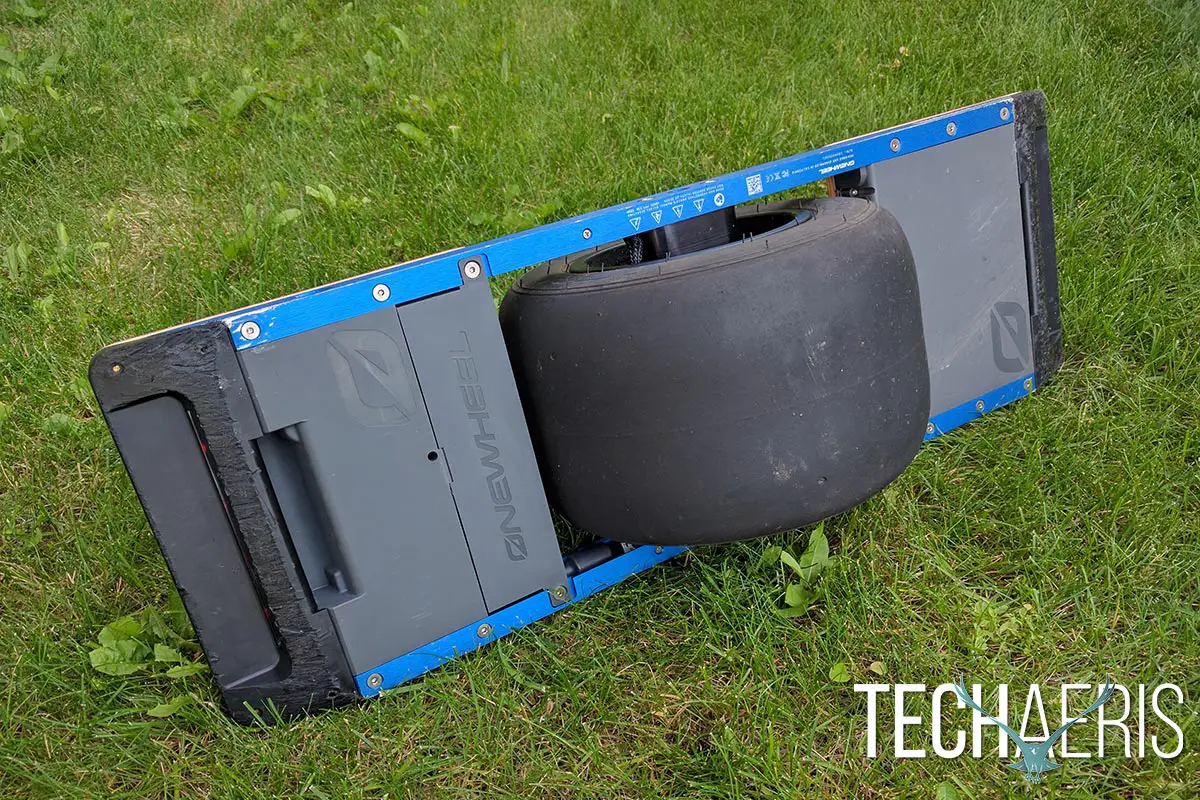
The Onewheel is definitely solidly constructed, and of course is an interesting enough design that it turned heads wherever people saw it.
Ease of Use
Before I go much further though it’s PSA time. Like any motorized device, safety is of the utmost importance. Make sure you’re wearing proper shoes and at least a helmet when using the Onewheel; knee and elbow pads definitely can’t hurt either. Awareness of your surroundings is important as well. Even though the wheel is thick and allows you to go just about anywhere, potholes, bumps, and other unexpected hazards can easily cause a wipeout, and potential injury, on the Onewheel.
That out of the way, you’d think a device with only one wheel would be extremely difficult to use. That is definitely not the case. When first using the Onewheel, you’ll want another person around, mostly to help you balance until you get the feel for the wheel. Place the OneWheel on the ground, one end will naturally rest on the sidewalk, road, or other surface. Turn it on using the power button and the blue ring around it will light up indicating it is turned on.
The easiest way to start is with your back foot on the Onewheel on the ground and then lightly place your other foot on the raised end of the Onewheel. The raised (front) foot pad has a pressure area indicated by blue lines in the middle of the grey lines. Placing your foot on this area will engage the motor on the Onewheel, removing your foot from this area by sliding it off (or jumping off the Onewheel altogether) will cause it to disengage.
Have someone stand in front of you, facing you parallel to the Onewheel and use their shoulder for extra balance. Apply pressure on the raised foot to level out the board, and once you get close to level you should feel the solid-state inertial sensors and algorithms balance the board around the wheel. Lean forward slightly and the Onewheel will start to move forward, lean back to slow down and stop. Once you stop, if you continue to lean back, the OneWheel will start to travel in the opposite direction. The key is to stand fairly straight as well, over bending your knees makes balancing harder on the Onewheel. It really is as simple as that.
Here’s a quick video after having been on the Onewheel for about half an hour. You’ll have to excuse the audio (or lack thereof) though, it was a windy evening!
Once you get the feel of the self-balancing sensors, it’s just a matter of getting used to controlling the speed of the Onewheel with your forward and back leaning. Turning is as simple as leaning your toes or heels towards the direction you want to go. After about 30 minutes, I really felt like I was getting the hang of the wheel, another half hour later and I was pretty confident. Remember the PSA? It’s easy to get over-confident on the wheel, and needless to say I hit a bit of a bump a bit too fast and wiped out — elbow pads would have definitely been a bonus at that time. Of course I had to hop right back on again as I was having a blast even after such a short time. One cool thing I did find after I used the Onewheel for a bit was when I’d find myself coming up to a corner and thinking I needed to slow down or stop and realize that I was already slowing down or stopping, your body starts to react as if the wheel was an extension of it.
The companion software app (discussed a couple sections down) also has a few easy to follow getting started videos.
Performance
Once you’re used to the Onewheel, it performs really well. The distance you can go on a single charge is pretty phenomenal. I was able to average around 9 to 10 kilometers on a single charge depending on terrain. Speaking of terrain, the Onewheel handles most types with ease. Of course pavement or concrete is easiest, but the Onewheel also travels just fine over grass (as you can see in the video above), dirt, and other compact surfaces. It handles small dips and bumps fairly well, it can handle bigger ones if you take care to slow down so as to not lose your balance.
On smoother, flatter surfaces, the Onewheel powered along well with the brushless hub motor. Hills were no match for it and the wheel powered along just as easily uphill as it did downhill, albeit a bit slower. Be prepared to lose battery life faster when riding in areas that aren’t as flat. During testing I managed to kill the wheel pretty quickly going up a longer hill when on a flatter surface I would have lasted a longer distance before the battery died.
After getting used to the Onewheel, it’s easy to motor along at a pretty decent speed. Whenever I checked what felt like a comfortable speed, I found myself going between 15 to 18 km/h, and managed to top it out at 22.8 km/h — a bit scary on a single wheel device once you realize that’s how fast you’re going but amazingly stable and smooth when you’re just motoring along.
CEO of Future Motion and Onewheel inventor said it best in a previous press release:
“Onewheel represents a huge shift in the typically stagnant, technology starved world of boardsports. The first thing you’ll notice when you get on Onewheel is that it’s simultaneously familiar and unlike anything you’ve ever ridden. The technology enables it to ride much more smoothly than a skateboard and carve turns like on snow or a surfboard. And then there’s a sprinkle of hoverboard thrown into the mix. Our first Onewheel owners are already pushing riding into new territory, riding tricks and terrain we never imagined were possible. We’re very excited to see where people will take it.”
It really does ride smoothly and it really is unlike anything I’ve ever ridden. Once you get comfortable with and confident on it, it’s not hard to see what you can do next with the Onewheel.
Software
The Onewheel also has a companion app which is pretty basic. The home screen is mostly a large battery indicator, near the bottom is the “Digital Shaping” tab which shows what mode you currently have the Onewheel set to. By default it is set to Classic which reduces the acceleration and top speed slightly, and is recommended for a “dialed-in ride.” The next mode is “Elevated” which is better suited for hill climbing and skatepark riding and maxes out the acceleration and top speed, and finally “Extreme” mode which has a higher top speed and a looser, more fluid feel that allows for deeper carving.
As mentioned previously, the app also contains a “Learn” section with three quick lessons on using the Onewheel. The settings tab keeps track of the Onewheel stats including trip odometer in distance travelled and revolutions of the wheel. Speed is also reported here as is battery remaining, voltage, temperature, and finally the current temperature of the motor as well. The stats can be toggled between metric and imperial. The one thing that’s a shame about the app is if for some reason you have to turn off the Onewheel, all the stats are reset so you lose the distance traveled. The speed indicator also only shows the current speed. It would be nice if there was another field which showed the top speed achieved during the session as it’s not easy (and probably not very safe) to be glancing down at your phone when you are travelling at 20+ km/h.
And last, the app has a link to the Onewheel Instagram account.
While the app is pretty basic, it does allow you to adjust how the Onewheel handles, as well as track the current stats on the wheel. A few minor changes and additions to the settings page would be a welcome addition, as would a running stats screen displaying the total distance traveled, top speed, and other lifetime stats.
Battery Life
This thing has some serious battery life. As mentioned above, I was able to average around 9 or so kilometers each time I used it. When I wasn’t tracking distance, I easily managed to get 2 to 3 hours of use out of the Onewheel. In fact, three days after I received it, I rode it in the local town parade — a distance of about 4.5km over a time of 2 hours — and still had 40% battery life left when the parade was over.
Recharging the lithium iron phosphate (LiFePO4) battery is pretty quick as well, with the wheel going from completely dead to 100% in about 20 to 25 minutes with the ultracharger.
Price/Value
As fun and solidly constructed the Onewheel is, the $1499USD price tag is a bit hard to swallow. Granted, depending on what you plan on using it for, $1500 is a small drop in the bucket compared to what you may pay in gas over the course of a year. However, the consensus from everyone I showed the Onewheel to and asked what they would buy one for was that it would be a “definite buy” at around the $500 price mark.
I know that these items go through a lot of research and development, and the construction of the Onewheel is top notch with its aluminum frame and Canadian maple footpads, but it will be interesting to see if Future Motion can do something to bring the cost down on future versions of the wheel without sacrificing quality.
Wrap-up
Don’t let the overall review score fool you. The Onewheel is a solid, fun personal recreational transportation device. Great battery life/distance and solid construction are barely eclipsed by the cost of the wheel, and if you have the disposable income to afford it, I guarantee you’ll have a blast with it — it really is unlike anything you’ve ever ridden before.
*We were sent a demo unit of the Onewheel for the purposes of this review.
Last Updated on June 23, 2021.

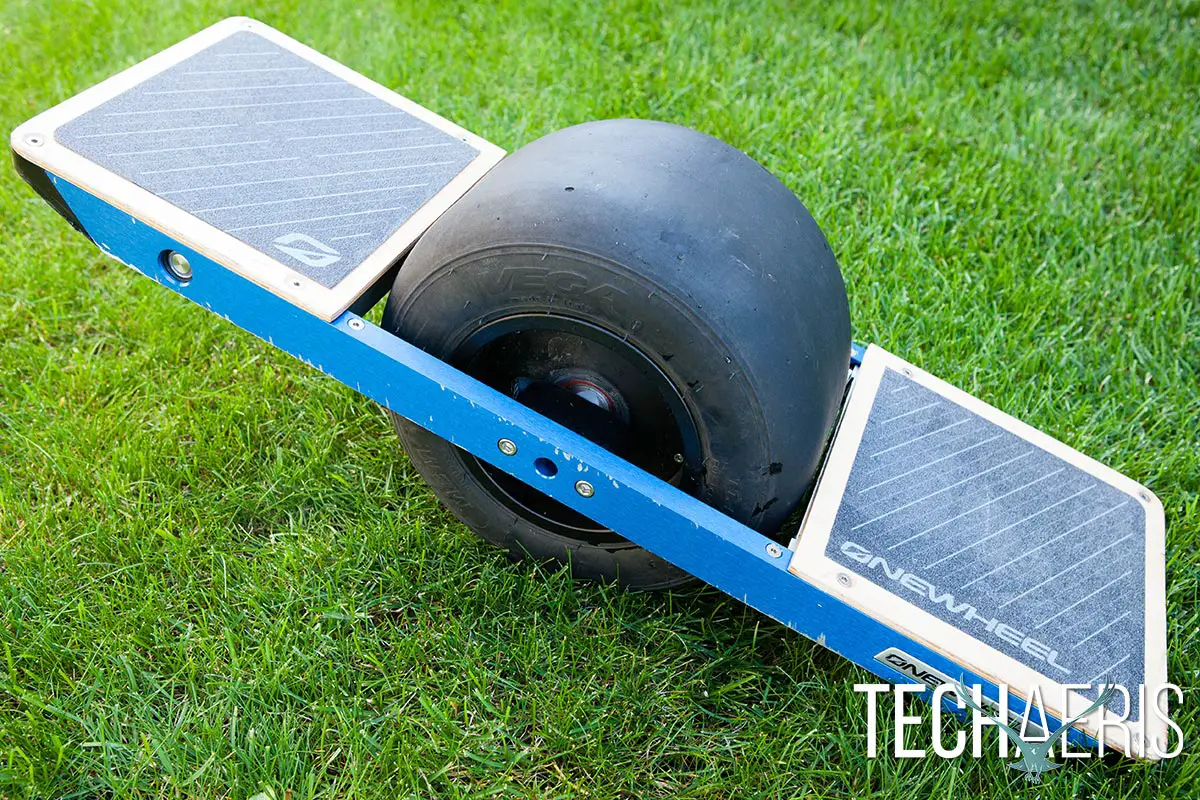
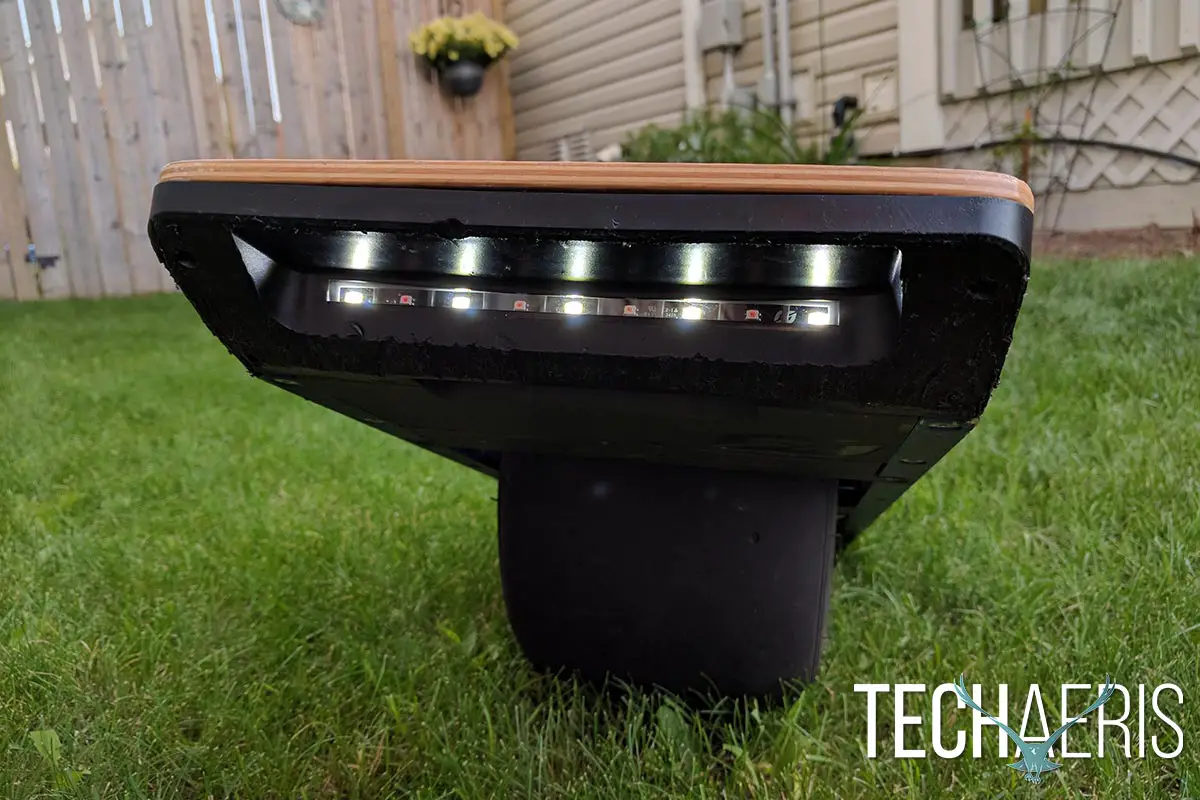
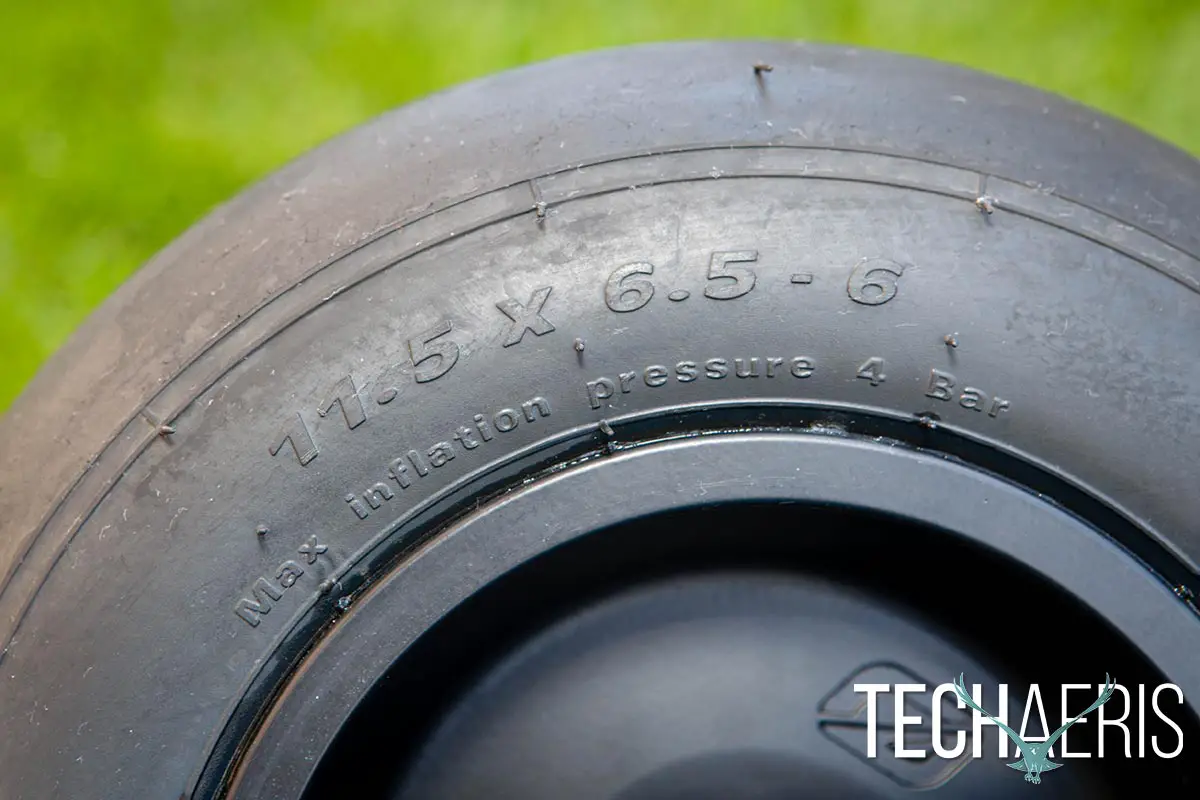
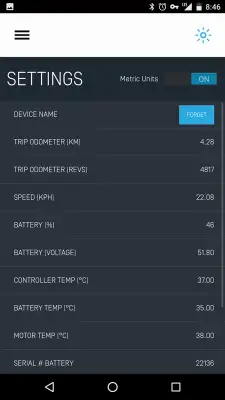
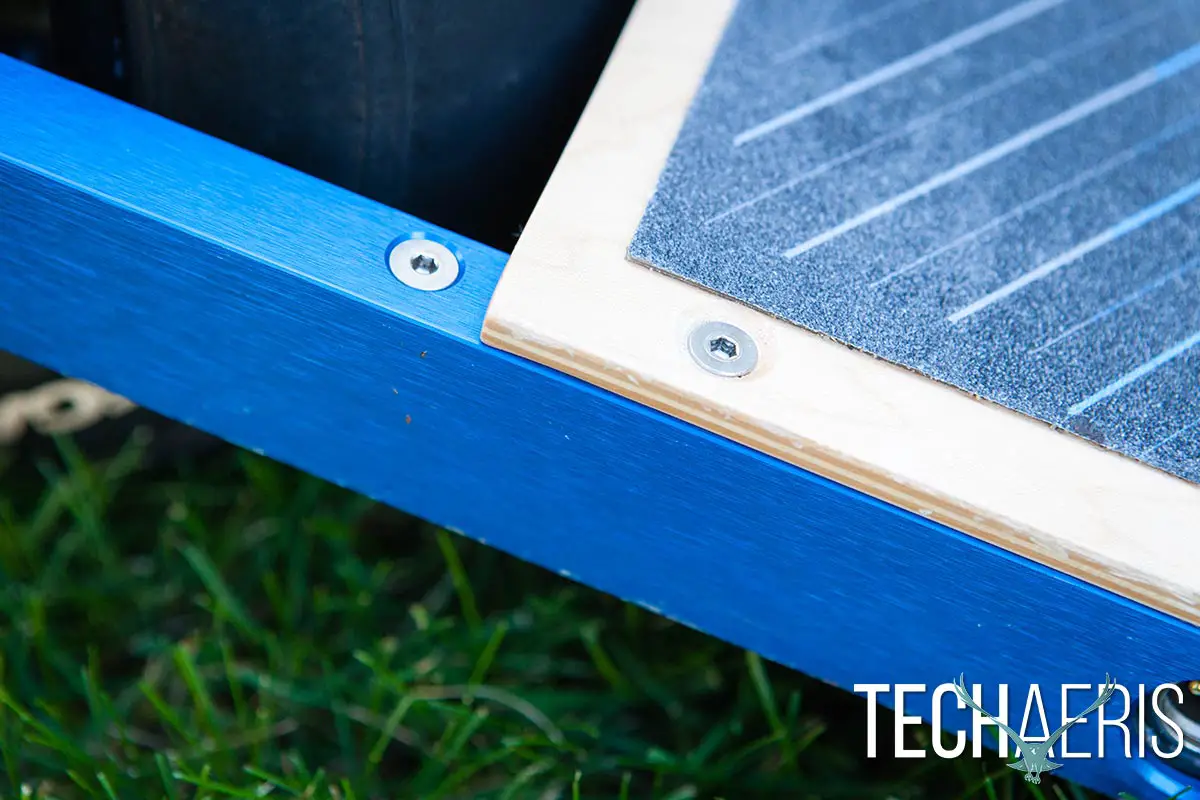
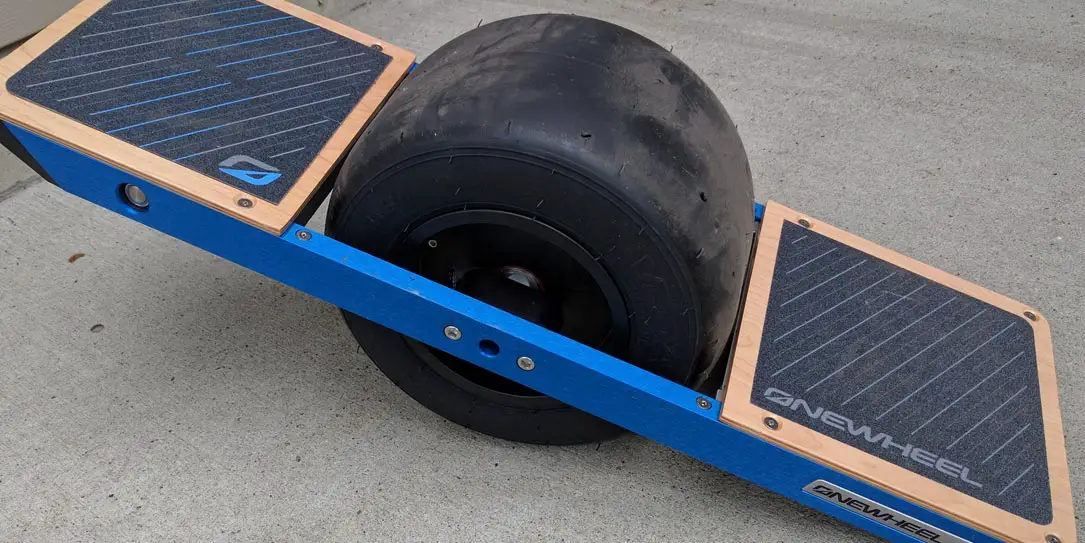









Comments are closed.